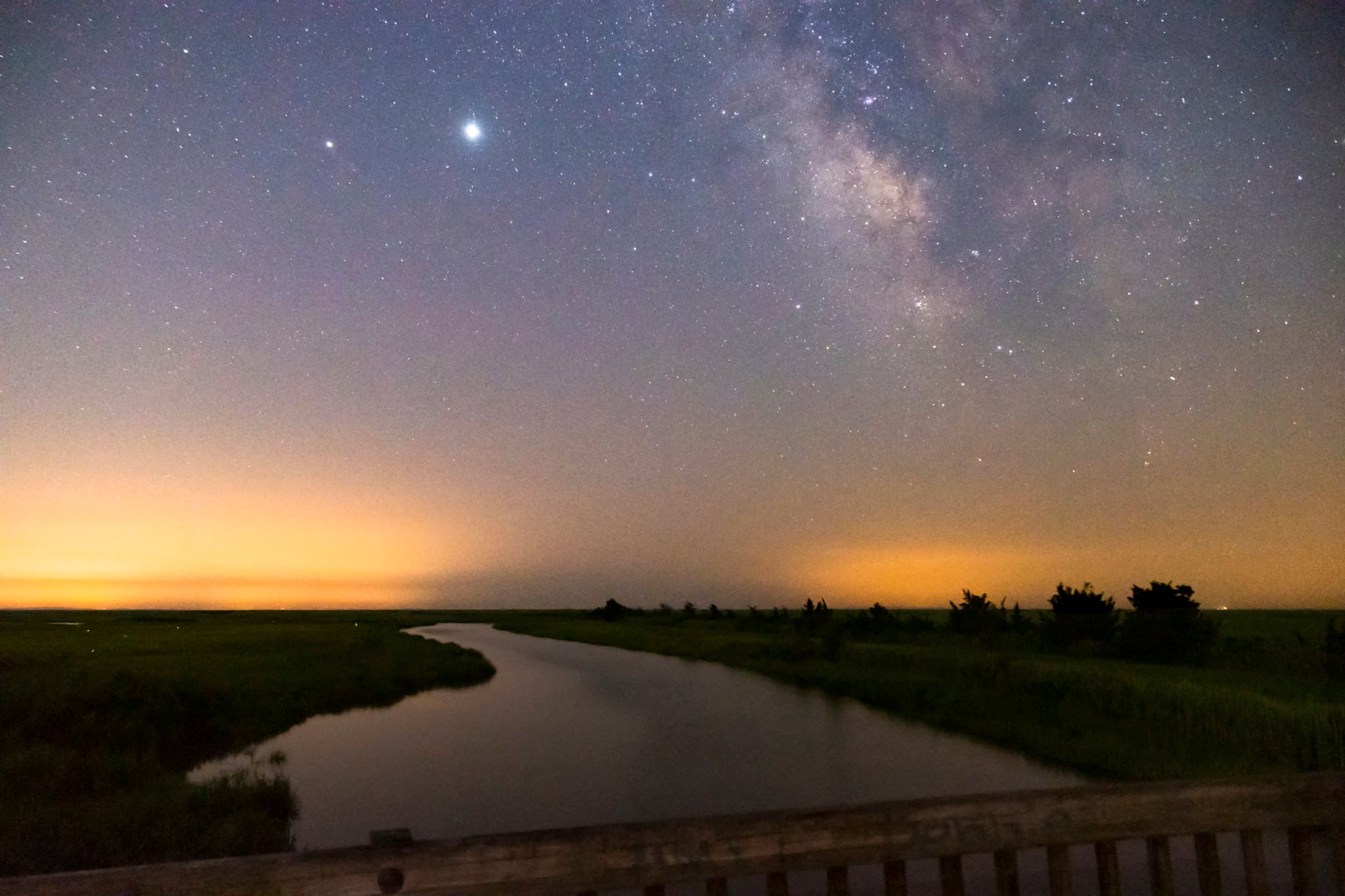What's in the Sky? February 2024
What's in the Sky? February 2024
What's in the Sky? February 2024
Put on your hat and gloves and head outside this month! There's a lot to see in the February night skies.Looking at the sky after sunset, the brightest thing you'll see, almost overhead, is the planet Jupiter. Jupiter has been hanging out in the constellation Aries, the ram, for the past few months as it finished its retrograde motion and is now moving "forward" in the skies again. Retrograde motion is an apparent backward motion of a planet against the background stars. It's caused by Earth's rotation around the Sun. As Earth "catches up" with another planet, the planet's motion appears to slow down and even go backward. Once we pass the planet, its motion returns to normal, prograde motion.
On Valentine's Day, February 14, Jupiter will be next to the crescent Moon. The two bodies will be close enough to be visible through the same binocular view. However, no special equipment is necessary to view this close conjunction.
For a special Valentine's date night, grab your binos and a telescope. Binoculars will reveal the Moon's craters. While a small telescope will allow you to spot Jupiter's Great Red Spot. It will be near the center of Jupiter in the planet's southern hemisphere at around 6:30 p.m. Check back two hours later to see the silhouette of Jupiter's moon, Europa on the center of the planet. By 9:30 p.m., Europa will be visible as a bright dot next to Jupiter, and its shadow will be visible as a black dot on Jupiter. While you're waiting to watch Europa transit Jupiter, point your telescope at some of our favorite winter objects - the Pleiades star cluster and Orion Nebula. The Pleiades is a group of over 1,000 hot, young stars all bound together by gravity. Without a telescope, you can spot between 6-7 stars, so this cluster is also called the Seven Sisters. The Orion Nebula is a cloud of gas and dust where new, baby stars and planets are forming. The process takes millions of years. It is visible as a fuzzy patch of light below the Orion's belt.
The Moon will be making close approaches to many bright objects this month. Look for the Moon near Saturn after sunset on February 10. The Moon will move eastward, reaching Jupiter on February 14. It will continue moving east and getting bigger as it approaches the Pleiades star cluster on February 16, Pollux in the constellation Gemini on February 20, and the brightest star of Leo, the Lion, Regulus, on February 23.
Say goodbye to Saturn. Saturn will be visible 30 minutes after sunset at the beginning of the month. By February 14 it will be lost in the sun's glare. It will return at the end of March in the pre-dawn skies.
